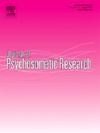广泛性焦虑症患者睡眠障碍的患病率及其相关因素:系统回顾和荟萃分析
IF 3.3
2区 医学
Q2 PSYCHIATRY
引用次数: 0
摘要
目的研究广泛性焦虑症(GAD)患者睡眠障碍的患病率,并确定与睡眠障碍相关的因素。方法:我们对与睡眠障碍相关的因素进行了系统回顾,并对广泛性焦虑症患者睡眠障碍的总患病率进行了荟萃分析。采用box-score方法量化与睡眠障碍和广泛性焦虑症相关的确定因素之间的关系。采用Cochran’s q检验和I2统计来评价研究的异质性。我们采用随机效应荟萃分析模型来估计睡眠障碍的总患病率,并使用Freeman-Tukey双反正弦方法组合数据。采用漏斗图和Egger检验评价发表偏倚。结果我们确定了8篇符合系统评价条件的论文;其中5例纳入meta分析。5项研究涉及5875名广泛性焦虑症患者;大多数参与者是年龄在18到94岁之间的女性。睡眠障碍的总患病率为72% (95% CI: 28 - 99%)。睡眠障碍的相关因素包括性别、体重指数、GAD严重程度、汉密尔顿焦虑评定量表评分、汉密尔顿抑郁评定量表评分、贝克抑郁评定量表评分、短暂疼痛评定量表评分、香烟消费、健康相关生活质量、甲状旁腺激素和维生素D水平。结论睡眠障碍在广泛性焦虑症患者中普遍存在,且与多种因素有关,包括个体特征、情绪和健康状况。针对可改变因素的干预措施可能对广泛性焦虑症患者有益。本文章由计算机程序翻译,如有差异,请以英文原文为准。
Prevalence of sleep disturbances and its associated factors in patients with generalised anxiety disorder: A systematic review and meta-analysis
Objective
We aimed to study the prevalence of sleep disturbances in patients with generalised anxiety disorder (GAD) and to identify the factors related to sleep disturbances.
Methods
We conducted a systematic review of factors associated with sleep disturbances and a meta-analysis of the pooled prevalence of sleep disturbances in GAD patients. A box-score method was employed to quantify the relationships between the identified factors associated with sleep disturbances and GAD. Cochran's Q-test and I2 statistics were used to evaluate the heterogeneity of the studies. We employed a random-effects meta-analysis model to estimate the pooled prevalence of sleep disturbances, combining the data using the Freeman-Tukey double arcsine method. Publication bias was evaluated by a funnel plot and Egger's test.
Results
We identified eight eligible papers for systematic review; five were included in the meta-analysis. Five studies involved 5875 GAD patients; most participants were females aged 18 to 94. The pooled prevalence of sleep disturbance was 72 % (95 % CI: 28–99 %). The associated factors of sleep disturbances included sex, body mass index, GAD severity, Hamilton Anxiety Rating Scale score, Hamilton Depression Rating Scale score, Beck Depression Inventory score, Brief Pain Inventory score, cigarette consumption, Health-related quality of life and parathyroid hormone and vitamin D levels.
Conclusion
Sleep disturbances are prevalent in GAD patients and associated with several factors, including individual characteristics and measures of mood and health. Interventions focused onmodifiable factors may benefit GAD patients.
求助全文
通过发布文献求助,成功后即可免费获取论文全文。
去求助
来源期刊
CiteScore
7.40
自引率
6.40%
发文量
314
审稿时长
6.2 weeks
期刊介绍:
The Journal of Psychosomatic Research is a multidisciplinary research journal covering all aspects of the relationships between psychology and medicine. The scope is broad and ranges from basic human biological and psychological research to evaluations of treatment and services. Papers will normally be concerned with illness or patients rather than studies of healthy populations. Studies concerning special populations, such as the elderly and children and adolescents, are welcome. In addition to peer-reviewed original papers, the journal publishes editorials, reviews, and other papers related to the journal''s aims.

 求助内容:
求助内容: 应助结果提醒方式:
应助结果提醒方式:


